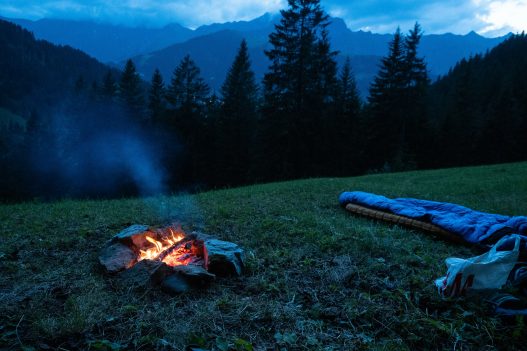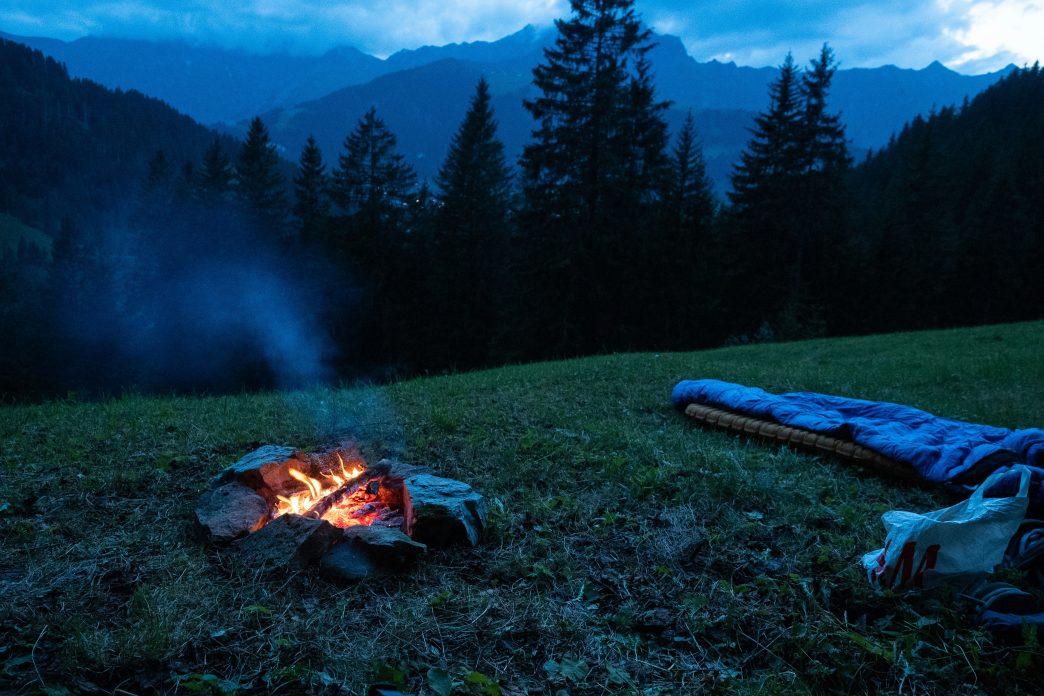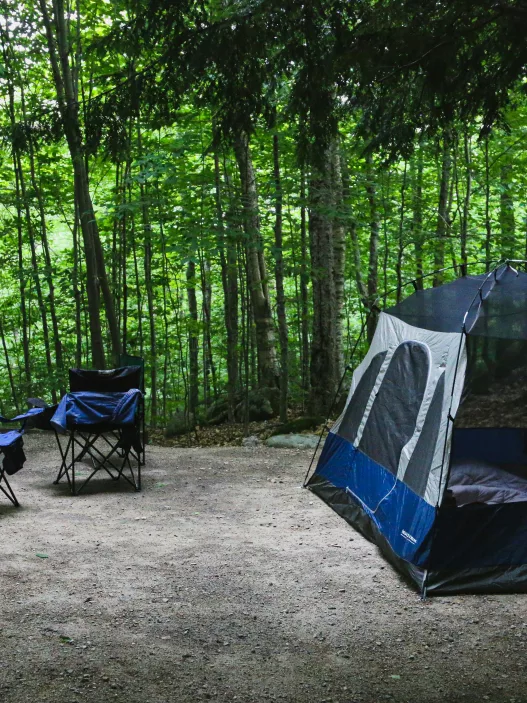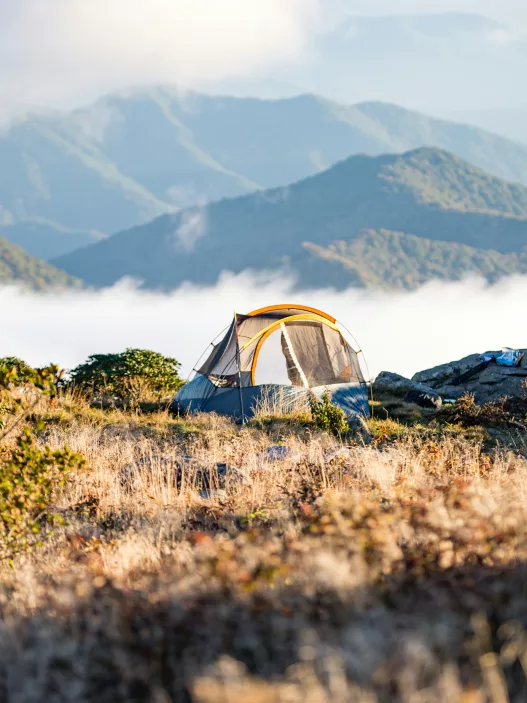Choosing the right sleeping bag can significantly enhance outdoor experiences, making sleep more comfortable in varied conditions. A good sleeping bag should match the climate, the type of camping, and individual preferences to ensure warmth and ease during rest. With a wide range of options available, navigating through features like insulation type, bag shape, and temperature ratings can be overwhelming.
Understanding specific needs is essential. A casual family camper will have different requirements compared to a seasoned backpacker. Evaluating factors such as portability, weight, and durability will influence the decision-making process.
Before purchasing, it’s beneficial to consider the typical environments where the sleeping bag will be used. This includes recognising seasonal variations and personal comfort thresholds. By focusing on these aspects, individuals can make informed choices that lead to restful nights in the great outdoors.
Understanding Sleeping Bag Ratings
Sleeping bag ratings are essential for selecting the right bag for various conditions. These ratings help users identify the temperature range suitable for their needs and the best season to use the sleeping bag.
Temperature Ratings
Temperature ratings indicate the lowest temperature at which a sleeping bag will keep a user warm. They usually include:
- Comfort Rating: The temperature at which a standard sleeper feels comfortable.
- Lower Limit Rating: The lowest temperature at which a standard male sleeper can sleep comfortably.
- Extreme Rating: The lowest temperature a bag can withstand, not recommended for prolonged use.
It’s crucial to consider personal factors such as metabolism and clothing. For example, a synthetic bag may perform better in wet conditions, while a down bag excels in dry environments. Always check the manufacturer’s specifications for accuracy.
Seasonal Guide
The seasonal classification helps identify the appropriate sleeping bag for specific weather conditions. Common categories include:
- Summer Bags (20°C and above): Lightweight and breathable, ideal for warm climates.
- 3-Season Bags (0°C to 20°C): Versatile for spring, summer, and autumn camping.
- Winter Bags (below 0°C): Insulated for colder temperatures, suitable for snow camping.
Knowing these classifications helps users choose not just for temperature but also for intended use, such as backpacking or car camping. Evaluate the predicted weather conditions and desired activities to ensure comfort and safety.
Materials and Insulation Types
The choice of materials and insulation is crucial in selecting an effective sleeping bag. Each type offers unique advantages that cater to different conditions and preferences.
Down Insulation
Down insulation is renowned for its lightweight and compressible nature. Made from the soft under-feathers of ducks or geese, it provides excellent warmth-to-weight ratio. A high fill power (number on the label) indicates superior insulation quality.
Key advantages of down insulation include:
- Warmth: It offers exceptional thermal efficiency, making it suitable for cold environments.
- Packability: Down bags compress easily, allowing for efficient storage and transport.
Despite its benefits, down insulation has a few downsides. It loses insulating properties when wet and can take longer to dry. For those who often encounter damp conditions, down might not be the best choice.
Synthetic Insulation
Synthetic insulation consists of man-made fibres, typically polyester. Its primary advantage is its water resistance; synthetic insulation retains warmth even when damp.
Key features of synthetic insulation include:
- Durability: It maintains its insulating properties over time better than down.
- Affordability: Generally, synthetic bags are less expensive than down alternatives.
Synthetic insulation is ideal for varied weather and environments, particularly for those who camp in humid or wet conditions. It offers good performance at a lower price point but is typically heavier and less compressible than down.
Hybrid Insulation
Hybrid insulation combines the best qualities of both down and synthetic materials. This type uses down in areas where warmth is critical and synthetic fibres in regions subject to moisture.
Benefits of hybrid insulation include:
- Versatility: It adapts well to diverse conditions.
- Optimised performance: The combination maximises insulation while reducing weight.
Hybrid bags can be an excellent choice for those who want the warmth of down but require added protection against moisture. This type of insulation performs well in variable climates, balancing functionality and comfort.
Shapes and Sizes Explained
Choosing the right shape and size of sleeping bag is crucial for comfort and warmth during outdoor adventures. The design influences insulation efficiency, packed size, and overall sleeping experience.
Mummy Shape
The mummy sleeping bag is designed to have a tapered shape, offering a snug fit around the body. This design minimises air space within the bag, which helps in retaining warmth.
Typically, mummy bags feature a fitted hood, allowing for extra heat retention around the head. They are often preferred by backpackers due to their lightweight nature, making them easy to pack.
Most mummy sleeping bags are rated for various temperatures, making them suitable for different weather conditions. Users should choose a bag with ample insulation for colder climates, ensuring both comfort and safety during their outdoor activities.
Rectangular Shape
Rectangular sleeping bags offer a more spacious interior, resembling a traditional bed. This shape is ideal for campers who prioritise comfort over weight and packability.
Many rectangular bags can be unzipped to convert into a blanket, increasing versatility. The shape is particularly useful for car camping where weight is less of a concern.
Additionally, they usually provide more room for movement, accommodating those who shift positions while sleeping. Rectangular sleeping bags may also be available in various lengths and widths, catering to different body sizes effectively.
Semi-Rectangular
Semi-rectangular sleeping bags strive to balance comfort and warmth. They feature a slightly tapered design compared to rectangular bags, making them a middle ground option.
These bags offer some room to move while still minimising heat loss by reducing excess air space. They are suitable for a range of camping scenarios, from family outings to solo trips.
Most semi-rectangular bags come with features such as draft collars and hoods to improve insulation. Users can find these bags in multiple materials and insulation types, allowing for climate-specific selections.
Double Sleeping Bags
Double sleeping bags are designed for two adults, offering ample space for couples or friends. This shape is useful for those who enjoy sharing their sleeping bag for warmth or companionship.
Typically wider than standard bags, they often have zippers down the sides to make getting in and out easier. Some models allow for unzipping into two separate sleeping bags, providing versatility.
Double sleeping bags are generally heavier due to the extra material, making them more suited for car camping. They often come with additional features, such as built-in pockets for personal items, enhancing the camping experience.
Weight and Packability Considerations
When selecting a sleeping bag, weight and packability are crucial factors. These elements significantly impact portability, especially during long hikes or camping trips.
Lightweight Options
Lightweight sleeping bags are ideal for backpackers and campers who prioritise ease of transport. They typically weigh between 1 to 3 kg, depending on the insulation type and material used.
Materials: High-quality nylon or polyester fabrics can enhance weight efficiency. Down insulation offers an excellent warmth-to-weight ratio, yet synthetic options provide better moisture resistance.
Consider the type of activities planned. For minimalist hikes, a bag weighing under 1.5 kg may be sufficient. For colder conditions, a slightly heavier option might be necessary to ensure warmth. Always check manufacturer specifications to make informed decisions about weight.
Compression Sacks and Storage
Compression sacks are essential for maximising packability. These bags reduce sleeping bag volume, making them easier to store in backpacks. Many sleeping bags come with an included compression sack, but not all.
Features: Look for sacks with adjustable straps to ensure a secure fit. Additionally, reinforced stitching can enhance durability during transport.
When packing, store the sleeping bag loosely at home to maintain loft and ensure longevity. Using a compression sack for short-term trips, however, is acceptable.
Understanding these considerations helps in choosing a sleeping bag that balances weight and packability effectively.
Comfort Features
Choosing a sleeping bag with the right comfort features enhances the overall experience during camping or outdoor activities. Elements such as zippers, baffles, hoods, collars, and footboxes play a crucial role in ensuring warmth and ease of use.
Zippers and Baffles
Zippers should be smooth and durable to withstand frequent use. It is advisable to look for bags with anti-snag technology that prevents jams, ensuring easy access. Two-way zippers offer convenience, allowing for ventilation or quick adjustments.
Baffles are essential for temperature regulation. They help maintain insulation by preventing the fill material from shifting. Look for vertical or horizontal baffles, as they provide optimal warmth retention by trapping heat closer to the body while also allowing for freedom of movement.
Hood and Collar
A well-designed hood provides extra warmth and reduces heat loss. Many sleeping bags feature an adjustable hood that allows users to seal in warmth while allowing for personal comfort adjustments. A hood with a drawcord helps create a snug fit around the head.
The collar also plays a vital role in comfort. A snug draft collar traps warm air and keeps cold air from entering. Some models offer an insulated collar that can be adjusted, allowing users to find the right balance between warmth and ventilation as conditions change throughout the night.
Footboxes
The footbox design is critical for comfort and warmth retention. A contoured footbox provides extra space for natural foot positioning, allowing for comfortable sleep.
Look for bags with insulated footboxes that prevent heat loss. Some models come with additional features, such as extra padding or a toe warmer, which can significantly enhance warmth. The choice of materials in the footbox also affects durability and comfort, making it an important consideration.
Durability and Care
Choosing a sleeping bag involves considerations for both durability and proper care. A well-maintained sleeping bag will not only last longer but also perform better in various conditions. The following sections focus on essential aspects such as waterproofing and cleaning.
Waterproofing
A sleeping bag’s ability to resist water is crucial, especially for outdoor activities. Many bags feature a DWR (Durable Water Repellent) coating that helps repel moisture. This coating can be affected over time, so regular maintenance is necessary.
When choosing a waterproof sleeping bag, consider the material. Synthetic fabrics often provide better water resistance than natural options like down. If opting for down, look for bags with water-resistant down to maintain insulation even when wet. Always check the manufacturer’s care instructions to preserve the bag’s waterproofing capabilities.
Cleaning and Maintenance
Proper cleaning and maintenance extend the life of a sleeping bag. It is important to wash the bag only when necessary, as frequent washing can degrade materials. When cleaning, use a gentle detergent free from additives and avoid fabric softeners.
For most sleeping bags, a front-loading washing machine is ideal. Wash on a gentle cycle with cold water. After washing, dry the bag according to the manufacturer’s guidelines. Using dryer balls can help restore loft in down bags during tumble drying. Store the sleeping bag loosely in a large cotton sack rather than compressed, to maintain its shape and fill efficiency.
Additional Considerations
Choosing a sleeping bag involves several factors beyond just temperature rating and size. Environmental considerations, compatibility with sleeping pads, and the use of liners can significantly affect comfort and sustainability.
Environmental Impact
When selecting a sleeping bag, it’s crucial to consider its environmental impact. Materials and manufacturing processes vary widely, so opting for bags made from sustainable materials can reduce ecological footprints.
Key factors to consider:
-
Filling Material: Down is often viewed as more sustainable than synthetic options but requires careful sourcing. Look for responsibly sourced down or alternative materials like recycled polyester.
-
Durability: A robust sleeping bag will last longer and reduce waste. Assess the quality and warranty options.
-
End-of-Life Options: Brands that offer recycling programmes for old bags contribute positively to the environment, allowing for responsible disposal.
Compatibility with Sleeping Pads
The insulation provided by a sleeping bag is often influenced by its compatibility with sleeping pads. A proper fit ensures warmth and comfort, especially during colder nights.
Consider the following:
-
Width and Length: The sleeping bag should match the dimensions of the sleeping pad to prevent cold spots and ensure insulation effectiveness.
-
Attachment Features: Some bags come with straps or loops to secure them to the pad, enhancing stability.
-
Thickness: Thicker bags may not perform optimally on thinner pads. Ensure the combined setup provides enough insulation from cold ground surfaces.
Sleeping Bag Liners
Using a sleeping bag liner can enhance comfort, hygiene, and the longevity of the sleeping bag itself.
Benefits of liners include:
-
Temperature Regulation: Liners can add warmth in colder conditions or can be used alone in milder weather, providing versatility.
-
Ease of Cleaning: Liners can be machine washed, protecting the sleeping bag from body oils and sweat.
-
Material Variety: Options exist in different materials such as cotton, silk, or synthetic blends. Each has unique properties that affect comfort and weight.
Selecting the right sleeping bag involves attention to these additional considerations to optimise the camping experience.









